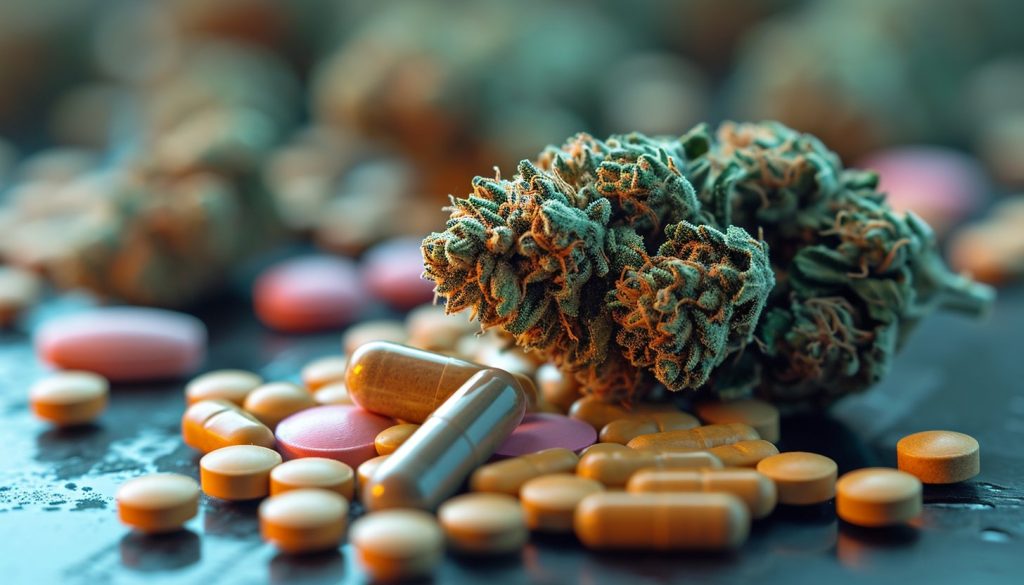Cannabidiol, more commonly known as CBD, is a component of cannabis that is growing in popularity due to its many health benefits. As the buzz around CBD continues to grow, it is essential to study its possible interactions with various medications. In this article, we will discuss the main drug interactions related to CBD and provide tips for minimizing these effects.
Sommaire
ToggleWhy can CBD interact with medications?
CBD has the ability to interact with many medications because it is metabolized by certain enzymes found in the liver. Indeed, the cytochrome P450 (CYP450) enzyme system is responsible for the degradation of many molecules, including CBD and certain drugs.
When CBD is consumed, it may partially or completely inhibit the activity of certain CYP450 enzymes, which may lead to a reduction in the metabolism of the affected drugs. As a result, this can change their concentration in the blood and cause unwanted effects.
Categories of medications likely to be affected by CBD
There are several categories of medications that are metabolized by CYP450 and therefore potentially affected by CBD. Below we’ll cover some of the most common examples:
1. Painkillers
Morphine and codeine are two examples of opioids that may have their metabolism affected by CBD. This may lead to an increase in their effects or an amplification of side effects.
2. Cardiovascular medications
Beta blockers, such as atenolol or propranolol, as well as anticoagulants such as warfarin, are also affected by this interaction with CBD. Too high a concentration of these drugs in the blood can cause heart complications.
3. Anxiolytics and antidepressants
Medications such as diazepam, alprazolam or selective serotonin reuptake inhibitors (SSRIs) such as fluoxetine or sertraline could also be impacted by CBD.
4. Anticonvulsant medications
CBD is often used as a complement to treatments for epilepsy, particularly for its anti-inflammatory and anticonvulsant effects. However, it could also interact with drugs such as carbamazepine, phenytoin or valproate.
5. Antibiotics
Some antibiotics, such as clarithromycin or erythromycin, are also metabolized by CYP450 and could therefore be affected by CBD consumption.
How to minimize interactions between CBD and medications?
It is important to take these possible interactions into account when using CBD in addition to drug treatment. Here are some tips to reduce the risks:
- Consult a healthcare professional: Before starting CBD supplementation, it is always recommended to consult your doctor or pharmacist to discuss possible interactions with your current treatments.
- Start with low doses: To reduce the risk of interaction, it may be wise to start with small doses of CBD and gradually increase according to the effects experienced and your doctor’s recommendations.
- Space out taking medications and CBD: Taking CBD and medications at different times of the day may help reduce the chances of these substances interacting.
- Follow up regularly: When taking CBD in addition to your regular medications, be sure to follow up regularly with your doctor for any changes in the concentration of medications in your blood and adjust doses if necessary.
In summary
CBD is a molecule with many benefits, but it can also interact with certain medications due to its metabolism by the cytochrome P450 enzymatic system. The main categories of drugs concerned include painkillers, cardiovascular drugs, anxiolytics and antidepressants, anticonvulsants and antibiotics.
In order to minimize the risk of interaction, it is essential to consult a healthcare professional before starting CBD supplementation, to start with low doses, to space out medication intake and to follow up regularly.



